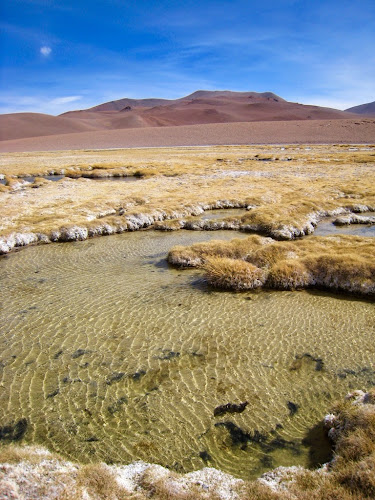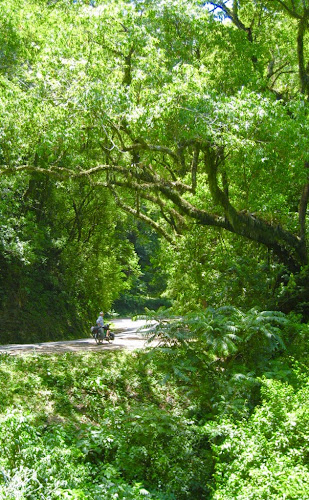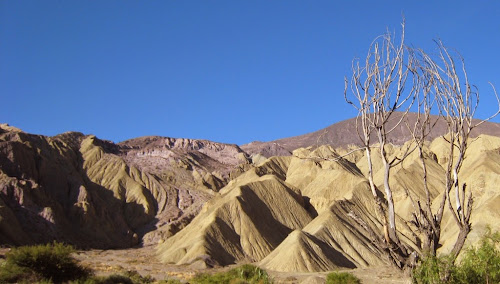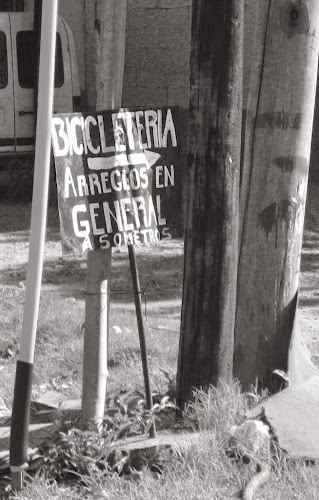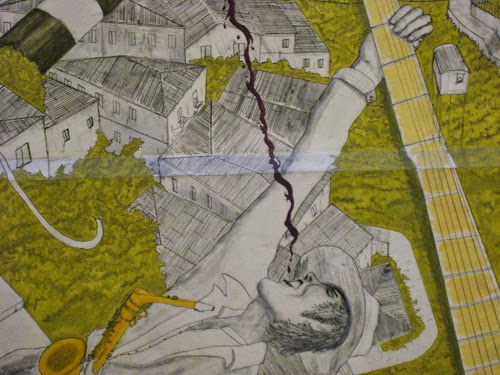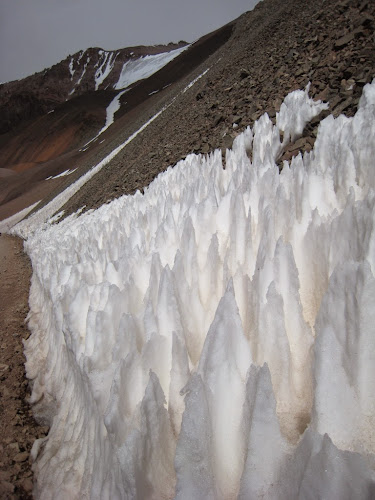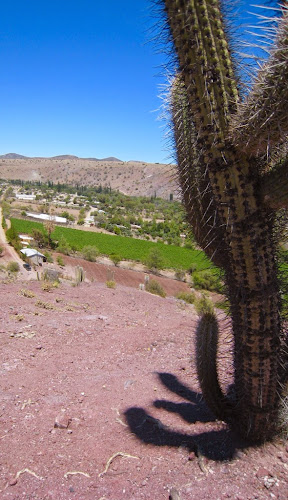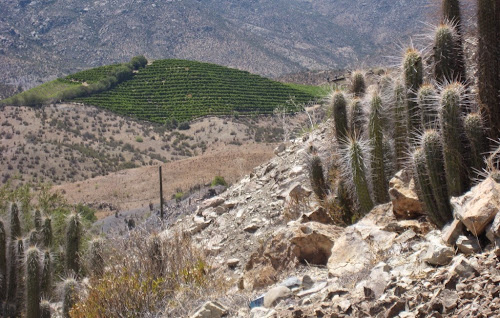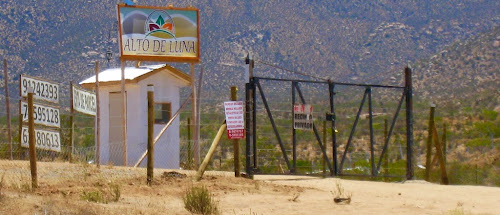A body confused, or an excuse to publish a few more images from 'up on top of the hill'.
The navigator has a pre-sleep routine. She likes to review the day. To rerun the events, the places, the experiences. To superimpose the evening's view upon that of the remembered image from that of breakfast time. On occasions that day's elapse can have undergone little change. Crossing the pampa for example, or cycling on the costal PanAmericana. Then it will be a case of remembering the small incidentals, the giant spider, slowly, determinedly, crossing the road, or finding a menu that offers 'deep fried fish eyes'. On other occasions the transformations will be so radical, it becomes difficult to reconcile morning with evening. The two times so out of kilter, that a body becomes confused. It's not only the visuals that disseminate a body, there's the olfactory and the auditory. Travel along the Andes and the changes become kaleidoscopic, a near continuous flicker of change.
Today started with a cut clarity of light, the thin cold air, silent. A flock of flamingos, huddled in the centre of the marsh pond, slowly coming to life, a ruffling of feathers, a stretching out of a skeletal leg, sending the first ripple across the water. The faint drifts of bog gas waft up to mix with that first delectable slurp of coffee. A glimmer of new colour, a sliver of ochres and sand dun starts to grow on the far hillside, the shadow line dropping, shrinking down the desert hills. We've crawled from the snug warmth of our bivvi bags, packed away our night spot and started cycling, our panniers near empty as we're wearing most of our clothing. The only un-frozen water bottle is the one I slept with. The road is near deserted, the frontier won't open for a few hours yet. We're on our own, climbing to the last 'abra'. Our latest and last high point. We know that from here it has to go down. Down to the thick air. It can't stay up at this level for ever, that and the fact that the kilometre posts are counting down to town. The longer the stay at this height, the lower the count, the steeper the drop. It's probably as well that we didn't know about the several short, sharp reascents that lie between ourselves and San Pedro de Atacama. The sun climbs higher, staying the cold air, burning hot through the duvet jacket on my back. That invigorating warmth that slowly melts my frozen toes and numb fingers.
On the final top we stop and count the twenty four separate mountains, ranged in a vast circle right around our horizon. Some are more distinct than others. A roads zig-zags up to the just visible structure of the world's most powerful telescope, where they hunt for our 'cosmic origins'. But standing clear is the classic shape of Volcan Lincancabur, the near perfect cone that will dominate our next two days in town.
Eventually the road decides to fall off the side of the Andes. A few half hearted bends, then a single plumb line drop. A ten percent descent that only confirms this passage's reputation. Going down, going east to west, it's a 55kms of finger-numbing braking. Going the other way it would be simply brain numbing. One cyclist we met a few years ago had described the road "come out of town and you see your day's work laid out before you, it rears up, a straight line uphill". At the time I thought he was exaggerating. We stop part way down to relieve our fingers and look back. He didn't exaggerate. Your whole climbing day is laid bare. No hidden secrets. No pleasant surprises. No pauses. No punctuations. It would take little imagination to know the purgatory that will have to be endured to attain that summit. Two and a half thousand meters in a straight line. I can think of no other road that comes even near to this statistic. No wonder those that we met over on the other side were so jaded. It would take a day of spectacular scenery to wipe clean that climbing memory. For us, it's two hours of freewheel breaking, rolling past a succession of lorry traps, which concentrate the mind with images of Paraguayan transports loaded with twelve German cars, out of control. Rolling down into a flat white light that rubs out all clarity, rendering that enigmatic volcano down to a faint haze, the merest suggestion of mountain. Down past the incongruous sight of a barb wired mine field, down into a town of which we'd been advised to have a low expectation of.
We push through the small, unusually non-monumented plaza of shady pepper trees, and whitewashed adobe buildings, decorated not with the usual hand painted logo of a certain cola company, but with faux renditions of native rock art. To one side is the under-repair, Iglesia San Pedro. It's roof under restoration, like a cut-away drawing, depicting the various stages of its original construction. On the opposite quarter the Casa Incaica, once a conquistador's home, now yet another artisanal shop. The remaining sides are strewn with awning shrouded tables, set out on the pavement, with wandering visitors perusing the menus and the tour operator's sales pitches. For this small town is Chile's premier tourist entre-port for the adventure tourist. The salars, the lagoonas, the geysers and the inevitable Valley of the Moon; every desert destination has to have one of the latter, all are waiting to be visited. The earth streets are unhindered by motor traffic, for the centre of town is 'peatonal'. A single fact that can transform a place. The juice lorry is parked up outside the cordon sanitare, in a far away car park, and pedal trikes are delivering to the numerous kiosks and mini mercados. Much of it bottled water, which gives the indication as to the majority of the visitors nationality's. Accepting it as a place who's purpose is to service a visitor industry, it has a comfortable feel. It has yet to succumb to the plague of 'highrise condo' or aggressive sales pamphleting.
We eat well, and we collect a recommendation for a camping, from a couple of Swiss overlanders, who had passed us at some point up on the hill. It leads us to another sanctuary and a very different bed night spot from this morning's. It's hardly a wonder that a body gets confused.
